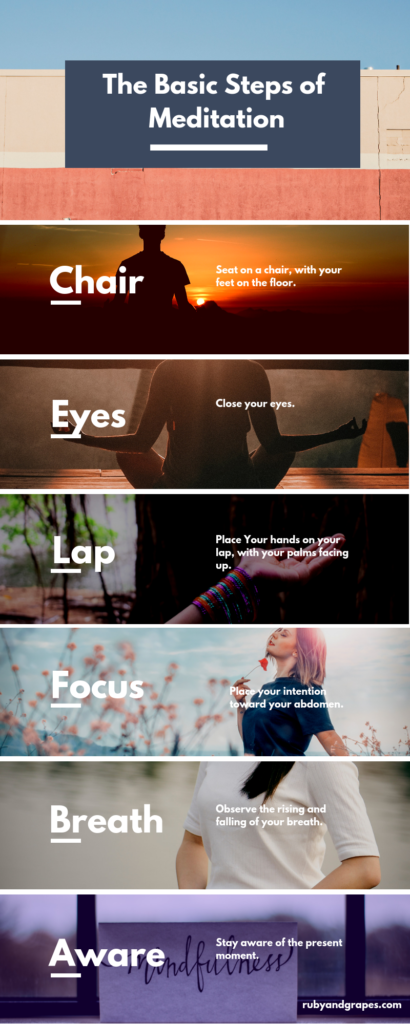Have you ever wondered if you could strengthen the muscles of your brain? Would you do it?
Studies have shown that the human brain reacts to mindfulness meditation in an “easily changeable and highly influenced” way, boosting concentration in a relatively short amount of time. This is incredible news for someone who has just discovered this wonderful practice, as twenty minutes a day could mean a boost for your concentration.
THE LONGER, THE BETTER
According to studies, the longer and more established the meditation is, the greater are the benefits. They carried out a study and participants showed to improve focus at the end of eight weeks by meditating 30 minutes a day. It also helped reduce their negative mood.
It has also shown to help the brain to better process visual information and improve power of concentration, improving your ability to control emotions.
In a pilot study involving people with Hyperactivity Disorder, a 10-minute meditation a day for three months resulted in stress and anxiety reduction, and the symptoms of the disorder were improved too.
AGING AND THE BRAIN
Not long ago the scientific community thought that as you age, your brain slowly declined. But thanks to the modern brain imaging technologies and the research into the results of meditation, that isn’t necessarily a given.
POSITIVE CHANGES
Neuroplasticity – This is the new term that science calls when talking about all the positive changes you can apply to your memory through meditation. It’s the brains ability to alter its own structure by expanding the circuits people use more often, thus by meditating, you promote neuroplasticity in your brain.

TYPES OF MEDITATION
Nowadays there is a type of meditation for every occasion. Every meditation starts with a basic set of instructions. This needs to be performed on a daily basis for the effectiveness desired. Your goal should be working yourself up until you reach a point of 20 minutes a day of sitting in the silence.
It sounds somewhat odd to face your blank mind, and for surely your mind might wander elsewhere by mid-process. More likely you’ll probably feel out of your comfort zone in the beginning, but practising it little by little each day will make you master it.
HOW OFTEN?
Your cognitive powers will start to strengthen when you start doing a simple five-minute meditation and then you can slowly grow that.
Set you phone timer and off you go. If you think five minutes is too long, try two to start with. This should help you to get a feeling of sitting in silent stillness and that time can gradually increase, as you feel more comfortable to keep going.
PATIENCE IS KEY
If you want help to boost your self-image, be patient and start slowly. Don’t beat yourself up just because you couldn’t accomplish your initial goal of x minutes.
Go a little longer than today each day and you’ll soon be doing a 30-minute meditation every day without even realising.
WHEN AND WHERE SHOULD YOU MEDITATE?
There should probably be a proper time and place but the truth is, we tend to get busier than ever nowadays and frankly, trying to establish a time and place can be stressful, so basically you’re trying to solve a problem and creating another. Therefore try not to stress much about it and whatever time or place you can fit into your routine is golden time. Don’t let the “when” and “where” become an excuse. Just make sure that you perform it around the same time every day.
The room should be as quiet as possible. Give your mind every opportunity to concentrate. Eventually you’ll become immune to little noises and they may even serve you as white noise up until when you realise you can meditate pretty much anywhere

ADOPTING A NEW STATE OF MIND – MINDFULNESS
Before you start the actual meditation, you have to adopt a new state of mind. The development of mindfulness is a vital part of meditation.
There has to be a new awareness, and the main goal is that you need to have awareness of your own body.
LEARNING CURVE
There is a learning curve when developing mindfulness for meditation. If your mind wander elsewhere, try to ignore the sensations you’re feeling when meditating.

CHOOSING POSITIONS
It’s very important to choose a comfortable position for your meditative practise. Your senses may become magnified during this transitional phase, and this is normal. It means that your sense of mindfulness is developing.
CONCENTRATING ON BREATHING
The cornerstone of the meditative experience is the breath. Through meditation, you increase awareness of this involuntary action.
Inhale, exhale, rise and fall of every breath – turn your concentration on this to increase your awareness on this involuntary action, thus it can become the perfect object of mindfulness for beginners – And remember, stillness is the key to succeed on this practise.
Do you have any suggestions for different types of meditation? Share your story with us below!
Did you enjoy this article? Like me on Facebook or Follow me on Twitter!

